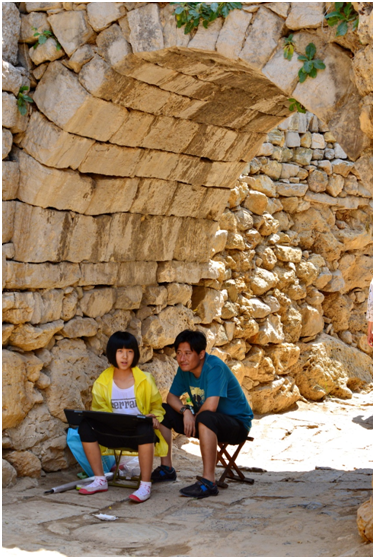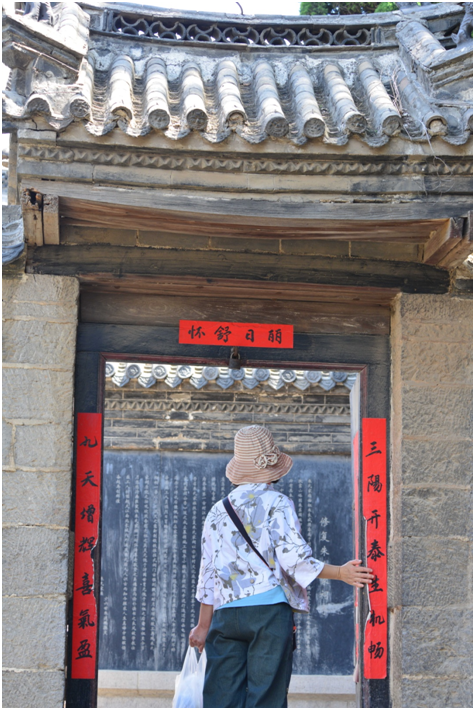|
 |
|
Students sketch a view in the ancient village of Zhujiayu, Shandong province. Photo by Ju Chuanjiang
|
Research on Chinese ancient villages including architecture, gardens, ecology and folk customs can teach a lot in the construction of modern villages.
Zhu Guangya, an expert on ancient architecture, calls for people to protect traditional villages which serve as places to pass down traditional culture and are spiritual homes for those who move to urban areas.
Many traditional villages have been destroyed or abandoned due to urbanization.
 |
|
A woman stands at a gateway in Zhujiayu village, Shandong province. Photo by Ju Chuanjiang
|
Statistics show that between 2002 and 2014, the number of Chinese villages was reduced from 3.63 million to 2.52 million. Feng Jicai, chairman of the Chinese Folk Literature and Art Society, said ancient villages are the carrier of Chinese culture and are the root of culture. If ancient villages disappear, some of China's cultural heritage disappears.
In recent years, Chinese government at all levels began to include protection of ancient villages on lists of government work. Investigation and identification work on ancient villages was jointly launched by the Ministry of Housing and Urban-Rural Development, the Ministry of Culture, the State Bureau of Cultural Heritage and the Ministry of Finance in 2012. Currently, less than 5,000 of the 12,000 ancient villages across China are protected and 2,555 villages have been named as Chinese traditional villages.
|